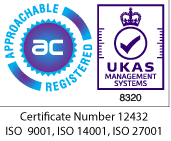Telecoms, Media & Technology
Innovating for faster & more reliable networks
Working with you to optimise your digital infrastructure
Digital infrastructure projects in the Telecoms, Media, and Technology (TMT) sector face significant challenges due to rapidly evolving technologies, increased costs and increasing demand. From 5G deployment and OTT media consumption to exponential data growth, IoT deployment, and the infrastructure needs of generative AI, this landscape is constantly evolving. These changes are driving substantial transformations in both virtual and physical infrastructure, including innovations, cost efficiencies and sustainability technologies in satellite, subsea cables, data centres, edge computing and fibre networks.
We work side-by-side with TMT companies to optimise their digital infrastructure and digital estates, while also offering integrated cost reduction services that enhance your procurement and contract management functions.
We provide tailored solutions that optimise your digital infrastructure while also streamlining costs
We are not just consultants. Our values go hand-in-hand with our work, and we are dedicated to delivering results that make a tangible difference to your business strategy.
Let us help you leverage the opportunities within your sector, so you can thrive in an evolving market and create the necessary infrastructure for sustained growth.
CONTACT THE TEAM
Case Study
Technical Due Diligence for the Foresight Group
Cambridge Management Consulting was engaged by the Foresight Group, an alternative assets and SME investment manager, to identify strategic towns in the South East for fiber network expansion for one of their fibre portfolio assets.
Cambridge MC conducted a rapid technical due diligence report, combining a visual topology assessment with public data analysis. This provided real-time insights, verified network inconsistencies, and accurately forecast ISP activity.
The detailed report, including PIA data, photos, and examples, pinpointed potential problems and recommended specific towns for expansion. Foresight Group was pleased with the report's speed and accuracy, which enabled them to make well-informed decisions regarding their expansion.
How we help our clients
Our team of experts has decades of experience delivering support to both private and public companies
Digital Transformation & Innovation
We help your business thrive in the digital age through innovative strategies, cutting-edge technologies, and process optimisation. We foster continuous improvement while driving new opportunities, transformative solutions, and sustainable growth.
Cost Reduction
Helps you to achieve significant savings while maintaining operational excellence. We conduct thorough assessments to identify inefficiencies and implement strategic cost-cutting measures without compromising quality or performance.
Procurement & Commercial
Designed to optimise your procurement processes and enhance commercial performance. We offer end-to-end solutions that include strategic sourcing, supplier management, contract negotiation, and spend analysis.
Digital Infrastructure
Dedicated to building robust, scalable, and secure digital foundations for your business. We provide comprehensive solutions that cover network design, data centre optimisation, cloud integration, and cybersecurity.
Project Management
Designed to ensure the successful delivery of your projects on time, within scope, and on budget. We provide expert project management solutions that encompass planning, execution, monitoring, and closure.
Mergers & Acquistions
Our M&A service supports TMT companies through strategic growth and cost reduction initiatives. We provide expert guidance in M&A strategy, due diligence, TSA support, and project management, ensuring stable transactions that maximise value.
Telecoms, Media & Technology
Case Studies





Our TMT vertical is led by Andy Bax
Senior Partner - Digital Infrastructure
Andy Bax, with over 30 years in telecoms, specialises in digital infrastructure and submarine networks. He's helped develop over 260,000 km of global networks, enhancing connectivity in underserved areas. Andy focuses on stability and efficiency, especially in start-ups, and values the role of people in success.
He began at FLAG Telecom, managing the FEA Submarine System from Europe to Asia. Then, at Global Crossing, he brought submarine networks into service and led major upgrades, also planning Global Crossing's Global NOC.
In 2007, Andy oversaw a 1,240km submarine cable linking Trinidad, Guyana, and Suriname, advising governments to optimise their digital investments. As COO and CSO at EdgeUno, he has concentrated on sustainable growth, reinforcing his expertise in digital infrastructure and subsea solutions.
Our team can be your team
Our team of experts have multiple decades of experience across many different business environments and across various geographies.
We can build you a specialised team with the skillset and expertise required to meet the demands of your industry.
Our combination of expertise and an intelligent methodology is what realises tangible financial benefits for clients.
SPEAK TO THE TEAM
Industry insights

"Cambridge MC helped the University of Bristol complete a multi-million modern network design & procurement, ensuring that University of Bristol remains the university of choice for student, academics and partners in a globally competitive market."
University of Bristol Case Study
"A multi-million modern network design & procurement"
Get in touch with our Consultants today
Case Studies
Our team has had the privilege of partnering with a diverse array of clients, from burgeoning startups to FTSE 100
companies. Each case study reflects our commitment to delivering tailored solutions that drive real business results.
CASE STUDIES
A little bit about Cambridge MC
Cambridge Management Consulting is a specialist consultancy drawing on an extensive global network of over 200 senior executives in 22 countries.
Our purpose is to help our clients make a better impact on the world.
ABOUT CAMBRIDGE MC

















